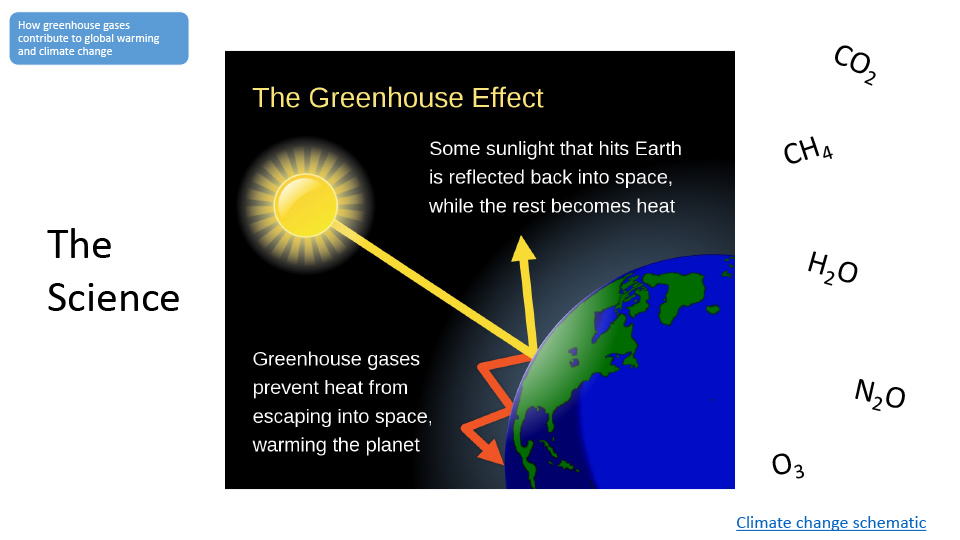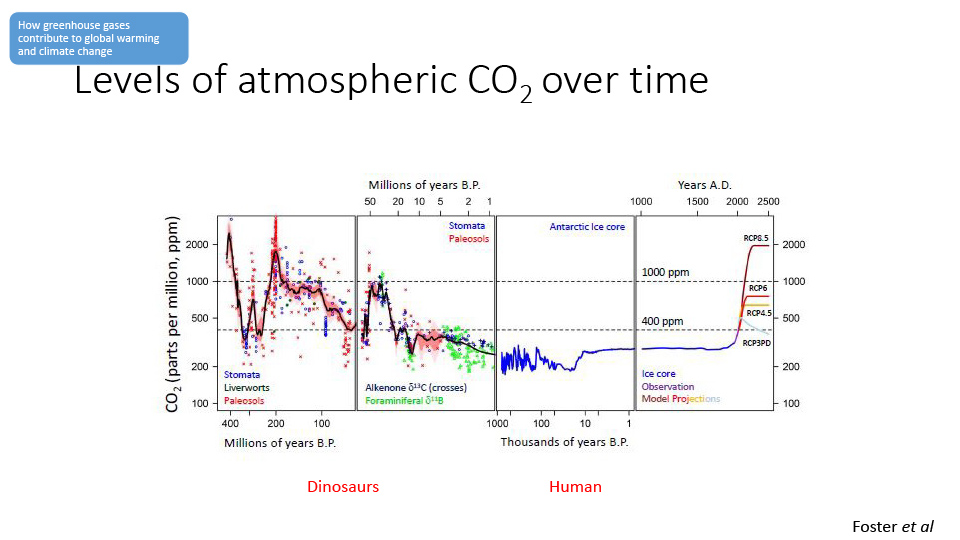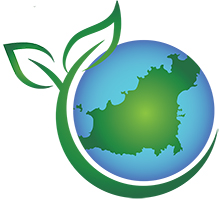31 Oct What is Climate Change – COP26
What is a greenhouse gas?

Our planet is surrounded by layers of different gases which we collectively call an atmosphere. Some of these gases absorb reflected heat (infrared radiation) from the Earth and this warms the atmosphere up. These gases are called greenhouse gases because, using a loose analogy, in a green house, the glass stops heat escaping and warms the air up inside.
This is a natural effect and is needed for us to be able to live on this planet. You only need to look at our neighbouring planets to see what would happen if we had too much greenhouse gases (Venus) or none at all (Mars).

Throughout this Earth’s history, the amount of carbon dioxide in the atmosphere has fluctuated. During the time of the dinosaurs the amount of carbon dioxide in the atmosphere was much greater than today and thus the planet was hotter. In the ice age, the levels of carbon dioxide were much less.
Fluctuations in these gases took place over millions of years and the planet and its flora and fauna adapted.

However, in modern times, over the past few hundred years, the amount of carbon dioxide and methane in the atmosphere has vastly increased due to human activity and the concentration has risen alarmingly. When I was at school I was taught that the atmospheric CO2 was 300 parts per million. Now as a science teacher I am telling my pupils that this value is over 400 (417) parts per million.
Looking at this graph you can see periodic changes in carbon dioxide levels, with the troughs corresponding to periods of Earth’s cooling and ice ages. Scientists are still researching why but they know that some of these regular changes are caused by wobbles in the Earth’s orbit around the sun. The data shows very graphically how the recent patterns in carbon dioxide levels do not match anything we have had in the past 800,000 years and scientists have shown that these values show a strong positive correlation to man-made interventions leading to carbon emissions.

The increase in greenhouse gases in the atmosphere is causing the average temperature of the planet to increase. Warming oceans will cause a feedback loop. This means as the oceans get warmer, they release more of the carbon dioxide that was dissolved in them and then this causes increased levels in the atmosphere which causes the oceans to warm even more and the destructive cycle continues.

These temperature changes have been converted into climate change stripes which you now see everywhere.
This runaway (out-of-control) greenhouse effect is called Global Warming.
What is Climate Change?

A climate describes the average weather in an area over many years. Climate change describes how there is a change or shift in the average weather.
The world is now 1.2oC warmer than it was 150 years ago. The Earth and its inhabitants have had no time to adapt and the extra heat energy in our planet’s atmosphere and on the ground and in the oceans are causing huge problems and threatening the lives of both humans and other organisms that we share this planet with. The increased temperatures are melting the polar ice and sea levels are rising. The extra energy in the atmosphere is causing extremes of violent weather. As a result, countries are becoming uninhabitable, and we are on the verge of the 6th mass extinction as organisms just cannot adapt to the rapidly changing conditions.
Different areas of the planet will be affected differently:
- UK and Europe: Increased intense Flooding
- Middle East: Extreme heatwaves and desertification
- Pacific: Low lying island nations disappearing
- Africa: Drought and food shortage
- Americas: Drought, storms, flooding, intense wildfires
- Australia: Drought, intense wildfires
In order to try and stop this turning into a catastrophe for life on Earth, we need to reduce the amount of greenhouse gases, in particular carbon dioxide and methane, going into the atmosphere and thus attempt to limit any average temperature rises to 1.5oC (which may not now be possible) or 2oC.
References
The Greenhouse effect
https://en.wikipedia.org/wiki/File:Climate_Change_Schematic.svg
Levels of atmospheric CO2 over time:
Foster, G., Royer, D. & Lunt, D. Future climate forcing potentially without precedent in the last 420 million years. Nat Commun 8, 14845 (2017). https://doi.org/10.1038/ncomms14845
Levels of atmospheric CO2 over the last 800,000 years:
Data: Luthi, D., et al.. 2008; Etheridge, D.M., et al. 2010; Vostok ice core data/J.R. Petit et al.; NOAA Mauna Loa CO2 record. Some description adapted from the Scripps CO2 Program website, “Keeling Curve Lessons.” Infographic from https://climate.nasa.gov/evidence/
The world is getting warmer:
https://www.bbc.co.uk/news/science-environment-24021772
Climate Change Stripes:
https://showyourstripes.info/s/globe
Institute of Environmental Analytics, University of Reading
What is Climate change- weather pictures:
A collage of typical climate and weather-related events: floods, heatwaves, drought, hurricanes, wildfires and loss of glacial ice. (NOAA) Download image here



Sorry, the comment form is closed at this time.